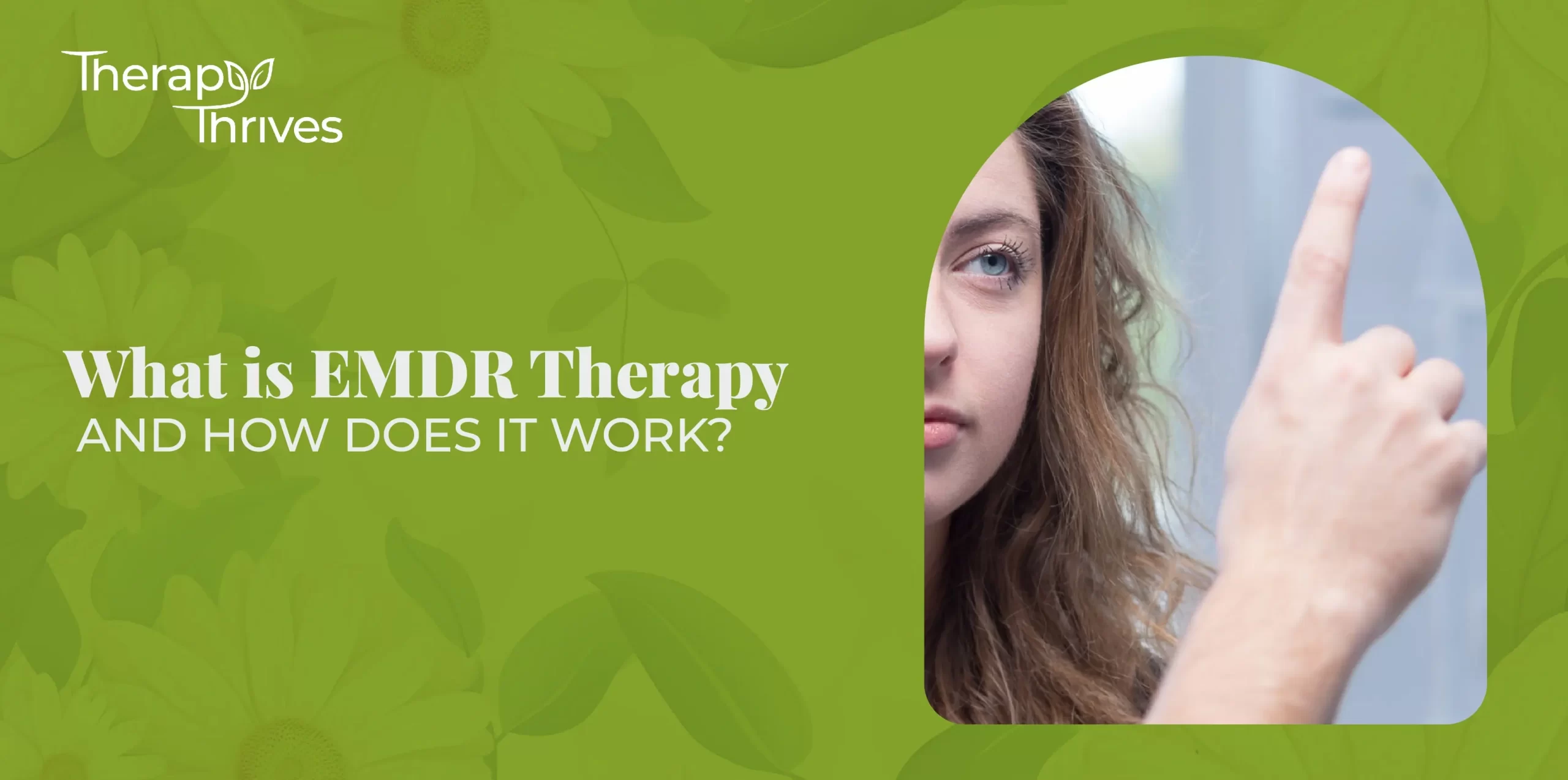If you have experienced trauma in your life, it can be hard to move on from it entirely. The memories of intense events may linger, affecting your daily existence in ways you might not even realize.
You might find yourself frequently bombarded by vivid flashbacks, where moments from the past resurface unexpectedly, leaving you feeling disoriented and overwhelmed.
Nightmares may disrupt your sleep, bringing the trauma into your subconscious, which can lead to anxiety and fatigue during your waking hours.
Let’s see how emdr therapy can be a beacon of light for people carrying strong emotional wounds and empower them to reclaim control over their lives.
An Introduction to EMDR Therapy for Better Understanding
EMDR is not a traditional talk therapy like most other psychotherapies; it’s more of a mindfulness-based treatment, but there’s more. EMDR stands for Eye Movement Desensitization and Reprocessing.
It is an empirically supported (well-researched) and structured model of psychotherapeutic treatment that involves working with memories, body sensations, core self-beliefs, and emotions to eliminate the residential emotional, somatic, and cognitive remnants of painful past experiences.
What is EMDR Therapy anyway, and how does it work?
EMDR was developed by psychologist Francine Shapiro in the late 1980s to treat post-traumatic stress disorder (PTSD). This therapeutic approach incorporates concepts from several psychotherapy theories, including cognitive behavioral therapy (CBT).
Eye Movement Desensitization and Reprocessing (EMDR) therapy is a form of psychotherapy that employs rhythmic left-right (bilateral) stimulation to aid individuals in recovering from trauma and other distressing life events.
Bilateral stimulation involves moving the eyes rhythmically from left to right.
Focusing on these movements and the traumatic memory is believed to lessen the emotional impact of the memory. As a result, you can start to heal from the fear and pain related to the trauma you experienced. With time, this exposure to the memories can reduce or even eliminate your negative responses to them.
EMDR Therapy for Trauma Recovery
EMDR therapy is a treatment used to help people regain mental wellness after suffering traumatic experiences. Originally, EMDR was a therapeutic option for people with post-traumatic stress disorder (PTSD). EMDR is beneficial for anyone experiencing a mental disorder related to trauma. Only certified therapy providers are authorized to conduct this treatment.
EMDR can also treat people with:
- Eating disorders
- Substance use disorder
- Panic disorder
- Dissociative disorder
- Obsessive-compulsive disorder (OCD)
- Depression
- Prolonged grief
Learn through EMDR Therapy Techniques
EMDR is typically delivered one to two times a week for a total of six to twelve sessions by trained professionals who are qualified to deliver the therapy.
The therapy involves eight phases of treatment that focus on the past, the present, and the future. All of the phases help you work through emotional distress and equip you with skills to cope with stress.
History Taking
The first phase involves gathering your complete history. This may include discussing painful memories, significant events, or experiences from your past, as well as current stressors. Based on this information, you and your therapist will create a treatment plan that targets specific memories or incidents.
Preparation
In this phase, your therapist will assist you in learning techniques to manage stress and anxiety, including various mental exercises. The goal of this phase is to enhance your ability to cope with emotional distress.
To accomplish this, a therapist will teach techniques for stress reduction, including deep breathing, guided imagery, and progressive muscle relaxation. This stage can also enhance the therapeutic relationship between the therapist and the client.
Assessment
First, your therapist will have you select one of the targeted memories you selected in phase one. You’ll identify several components of the targeted memory:
- A vivid mental image related to the memory
- A negative belief about yourself
- Related emotions and body sensations
You’ll also be asked to identify a positive belief about yourself related to the mental picture of the memory and rate this belief according to how true it is.
Desensitization
While you are focused on the targeted memory, your therapist will lead you through stimulation sets. These sets may include eye movements, tactile taps, or auditory tones.
After each stimulation set, your therapists will instruct you to clear your mind and discuss any insights, thoughts, memories, feelings, or images that came to mind. If you still experience negative sensations, they will become the focus of the next set.
Installation
The fifth phase of EMDR strengthens the positive belief you identified in phase three. If you want to change your positive belief to something else, this is the time to do so.
When you no longer feel distress associated with the target memory, your therapist will ask you to concentrate on your positive belief.
While you focus on both the target memory and the positive belief, your therapist will guide you through additional sets of stimulation.
Body Scan
Once you have reinforced your positive belief, your therapist will ask you to observe any physical reactions you may experience when recalling the target memory along with the positive belief.
This exercise aims to identify any lingering distress.However, If you’re still experiencing stress, your therapist will take you through more stimulation sets until it’s resolved.
Closure
Closure wraps up each session, during which you and your therapist will reflect on your progress and discuss how to maintain these improvements daily. Typical homework assignments include:
- Daily journaling that tracks your progress and the relaxation techniques you learn.
- You may be encouraged to use imagery that allows you to picture what it would be like to gradually face your fears.
- Self-help techniques, such as visualization, are where you use your imagination to envision a peaceful environment.
Reevaluation
Every new session starts with a review. You and your therapist will discuss your current psychological state and evaluate whether the treatment and self-relaxation techniques are effective.
They will ask whether any targeted memories have come back since the previous session. Additionally, you’ll assess if there’s a need to address other targeted memories identified in phase one.
Is EMDR safe? What are the potential dangers?
Although research has shown that EMDR is a safe and effective treatment for trauma, there are still side effects. Typically, they are short-term and mild.
As Sarah Rollins said,
“The most common side effects include an increase in stressful memories, heightened emotions during processing, lightheadedness, fatigue, headaches, and vivid dreams. New traumatic memories can also resurface.”
The benefits of EMDR go beyond just PTSD and trauma resolution. This therapeutic approach offers a variety of potential advantages, such as:
- The therapy changes your negative thinking and can help you identify challenges that are cluttering your mind.
- It decreases chronic pain through bilateral stimulation and activates the religion of the brain with relaxation.
- It improves self-esteem by targeting distressing memories and negative thoughts associated with yourself.
- EMDR therapy yields fast results, with 80% to 90% positive results within the first three sessions.
Final Note
Don’t let the weight of the past constantly overshadow your possibility of enjoying the present or looking forward to the future.
Engaging in activities that once brought you happiness may take time, but it is not hollow or out of reach again. Your story continues, and the best chapters are ahead.
Remember that healing isn’t linear, but each step reflects your resilience. Seek support through EMDR therapy to connect with those who can understand what you’re going through better.
Don’t hesitate to seek help for the healing and happiness you deserve.

